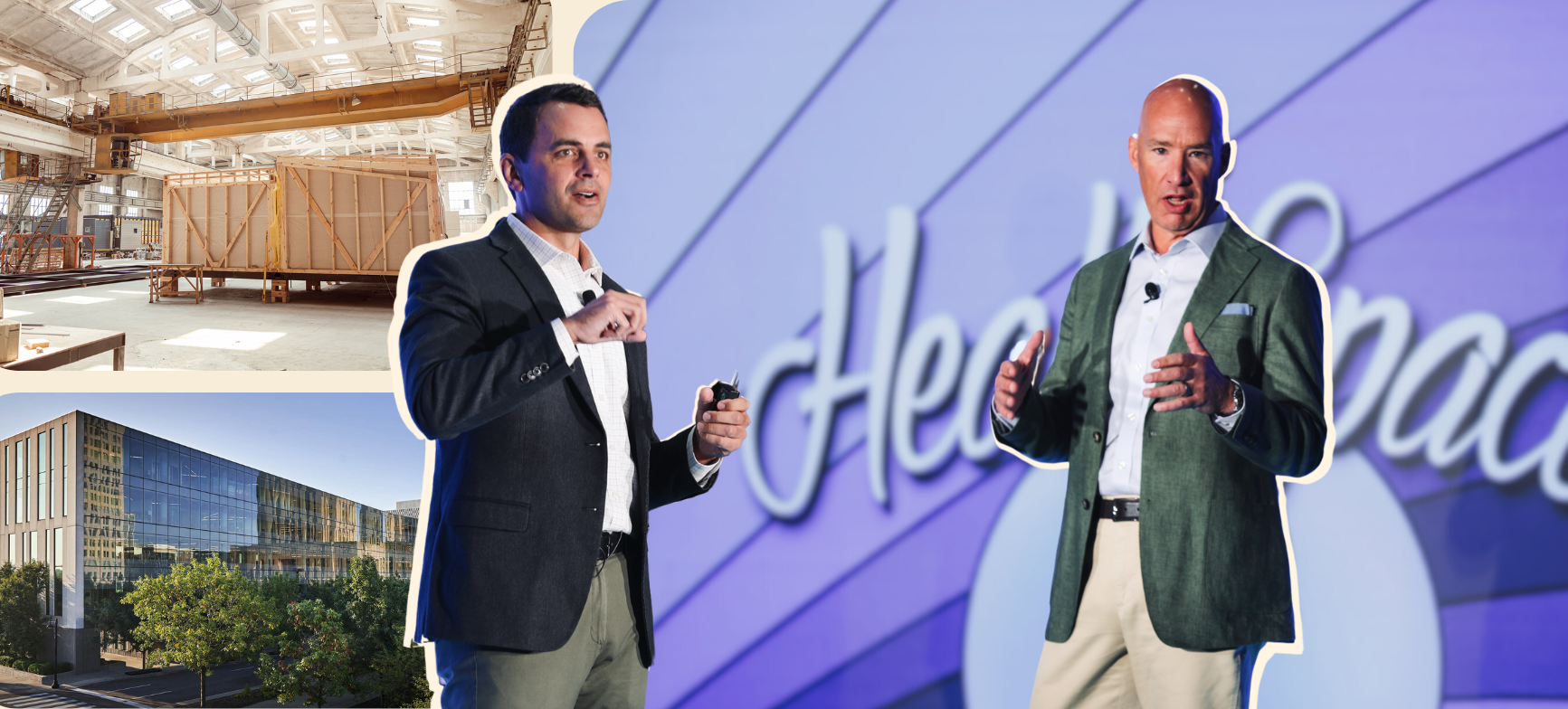An invite-only gathering of real estate & facilities leaders from the nation's top healthcare providers.
An invite-only gathering of real estate & facilities leaders from the nation's top healthcare providers.

When Russell Templin, Senior Vice President of Healthcare, and Sam O'Connor, National Healthcare Preconstruction Director with JE Dunn Construction, took the stage at HealthSpaces, they quickly dispelled a common misconception: prefabrication isn't just about pods and racks – it's about rethinking the entire construction process. For healthcare facilities leaders grappling with labor shortages and cost uncertainties, their insights couldn't have been more timely.
While schedule savings often drive the prefab conversation, O'Connor highlighted an overlooked advantage: better collaboration. Thanks to early decision-making and team integration, prefabrication creates what he calls "a change of mentality" among contractors. This shift leads to more innovation, better documentation, smoother coordination, and fewer surprises down the line.
One persistent myth they tackled: prefab means cookie-cutter solutions. "Every project, every program can be customized and have a custom look”, Templin emphasized. The key is making design decisions and evaluating options for prefabrication early – deciding what you want the space to look like, then determining how prefabrication can help achieve that vision.
O'Connor shared a striking visual: in a typical greenfield hospital project, over 50% of costs are tied to the most complex trades – electrical, plumbing, and mechanical contractors. "We have to focus our attention on them being successful and not leave it up to chance," he noted. With labor shortages making it impossible to simply throw more workers at projects, prefabrication offers a way to help mitigate schedule risks from the start.
When asked about the potential for off-site construction hours on larger projects, teams often aim high, sometimes targeting as much as 50% of a project for prefabrication. And the benefits go beyond accelerated schedules and greater innovation. O'Connor pointed out a crucial advantage: prefabrication can significantly reduce onsite workforce requirements. For example, reducing a project's peak workforce from 950 to 750 workers has major implications for everything from parking to site logistics, making the entire construction process more manageable for health systems.
For healthcare facilities leaders in the room, the message was clear: embracing prefab isn't just about building differently – it's about building smarter. In an era of persistent labor challenges and cost pressures, that's a message that resonates across every healthcare system, regardless of size.
Watch their full talk below:

Posted by
HealthSpaces is a community for people that plan, design, build and operate spaces where healthcare is delivered.
June 7-9, 2026 | Braselton, GA
Learn MoreLearn about the latest innovations in healthcare facilities planning, design, construction & operations.
Comments